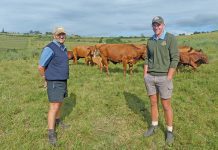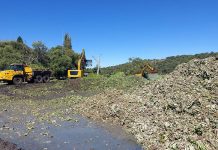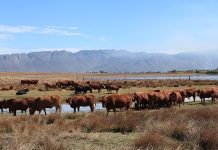High product prices are dangerous for farmers and industries and need careful management.
The US and SA experienced A PROPERTY boom that lasted till 2007. Property prices grew at very high rates and homeowners were encouraged by banks to use the higher value of their properties to take out more credit. During a boom, it’s easy to forget that in the economy, as in nature, everything that goes up must come down again. T
There are a few theories to explain this phenomenon. The “greater fool” theory says that people will pay inflated prices as they believe that other people are greater fools and will buy the properties or shares from them at still higher prices. The second theory says that something like the effect of too little oxygen when people climb mountains happens when prices goes up steeply. The same sense of invincibility and euphoria one gets with too little oxygen happens and creates the belief that prices will continue to increase.
Prices always return to lower levels and usually the greater the boom, the deeper the slump. In time the economy returns to more normal levels and a slower sustainable growth becomes the norm again. I n agriculture, higher prices usually lead to higher production that inevitably results in lower prices.
Farmers who treat higher prices as something that will continue indefinitely are time and again caught unawares as prices drop and profitability decreases. Those farmers, who treat windfall profit as the new permanent level and spend it as quickly as possible, soon find themselves in financial trouble again. Maintaining quality H igher prices are seductive and industries that don’t maintain quality and product integrity when prices are high may lose their share of lucrative markets. Many years ago the MD of the prominent Bradford wool brokerage, known in SA as ADF, told the following story.
Before the Second World War there were two French areas that produced high quality brandy, Cognac and Armanag. After Second World War when prices increased sharply, the province kept their strict quality controls while Armanag allowed lower quality products on the market. The rest is history. Premium brandy is known as Cognac. The same thing happened in the early 1980s to Jaffa oranges from Israel. They didn’t control quality while SA exporters kept up strict quality control through the Citrus Exchange and the Outspan brand. When deregulation came about in 1998 and the Deciduous Fruit Board stopped their one-channel export marketing of SA fruit, everybody rushed into the export markets with dire results.
Luckily the SA industry soon realised that a free-for-all without quality control would lead to disaster and instituted quality control procedures again. igh prices in 2007 and 2008 hold the same danger for SA producers. There are some unsubstantiated rumours of low-quality SA fruit on some overseas markets resulting in lower product prices. Producers and traders who try to sell low-quality products on the export market not only risk their own income but put the future of the total SA industry at risk. The Perishable Products Export Control Board has a huge responsibility to ensure that substandard products do not reach export markets.
The current problem in China with the use of melamine as a “food additive” illustrates what can happen if unscrupulous businesspersons are allowed a free hand. The Chinese nearly destroyed their dairy industry by doing this. They also did huge damage to their chances of developing markets for Chinese products in other countries.
How to manage prosperity
It’s frequently more difficult for farmers to manage higher income than it’s to manage a period of depressed income. It’s difficult to resist that new tractor or 4×4 if you earn double the income you earned in the previous year. All SA farmers face serious risks in 2008 and 2009. While a weaker rand generally leads to higher product prices, it also leads to higher input prices. If the rand weakens more against the US dollar than the euro, export industries, that do a large part of their business in euros, may find that the increase in product prices doesn’t cover the increase in input prices. roduction costs increased sharply from 2007 to 2008 and while the global economic slowdown may result in lower commodity prices on international markets, the weaker rand will largely eliminate any benefit for SA farmers.
While it seems as if we have seen the end of the interest rate cycle, the sharp decrease in the value of the rand during October shows that higher future inflation and thus higher interest rates remain a possibility. Under current uncertain conditions, playing it safe is probably the best strategy for farmers. High prices create a sense of optimism and greed for more. We can’t allow this to destroy our export markets. Farmers would do well to keep their wallets as tightly closed as possible this year Dr Koos Coetzee is an agricultural economist at the MPO. All opinions expressed are his own and do not reflect MPO policy. |fw








